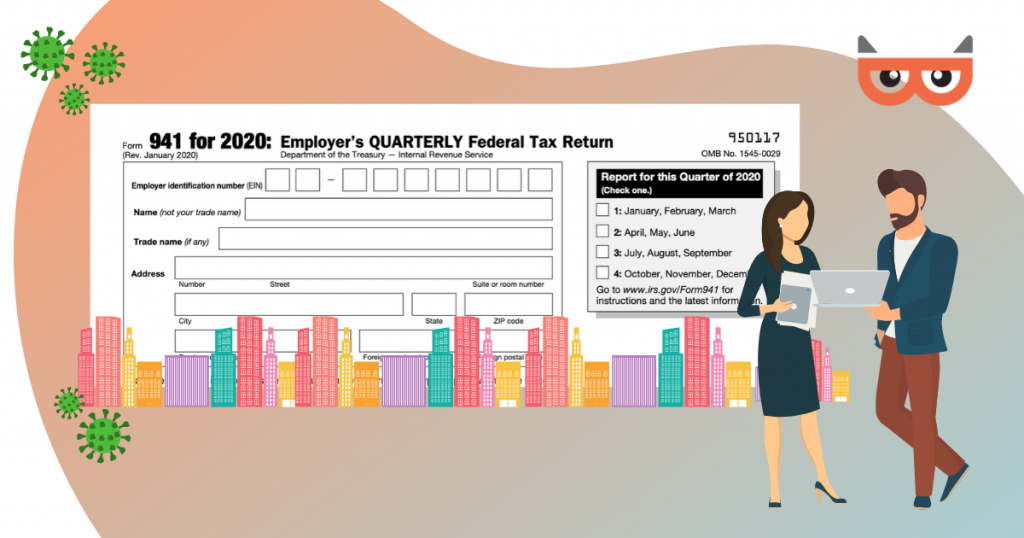You Will Probably See These Changes on the Revised Form 941…
reading time: 11 minute(s)

You may have heard that changes are coming to the Form 941 to accommodate the new tax credits set in place by the CARES Act. You heard right, the IRS is in the process of updating this form to reflect both the Employee Retention Tax Credit and the credits for qualified wages for sick leave and family leave.
On April 30, 2020, the IRS released a draft of the Form 941 for 2020. While this is just a draft and not intended for actual filing, it does give businesses an idea of what they can expect when filing in the future. As we patiently wait for the IRS to release the official revision of this form, let’s talk about what you can expect when filing for the second quarter of 2020.
What is Form 941?
First of all, let’s cover the absolute basics. The Form 941 is a quarterly form that all employers who pay wages subject to social security and income taxes withholding must file. The purpose of Form 941 is to report these withholdings to the IRS.
Why Change The Form?
COVID-19 has changed everything. The Coronavirus Aid, Relief, and Economic Security Act was created to offer the much needed tax relief to businesses. This relief came in the form of the Employee Retention Credits, which allow businesses a way to keep their employees on payroll despite economic hardships.
There are also tax credits for qualifying employee sick leave or family leave wages. These refundable credits are available to employers with 500 or less employees who are mandated to offer two weeks of paid sick or family leave to their employees amidst the virus.
Employers have different options for claiming these credits on the IRS information returns. Employers have the option to defer tax payments and the employer share of social security taxes. There is also the option to file the new IRS Form 7200 for an advance on these credits as needed throughout the quarter.
Because these credits are crucial for some businesses to survive the current economic conditions, the IRS is working to update the Form 941 to accommodate tax credits and deferments. This way businesses will be able to easily report the tax credits that they have taken advantage of during the quarter.
How Is Form 941 Going To Be Different?
There are many differences in the draft of Form 941 released on April 30, 2020 as opposed to the last revised form, released in January 2020. There are 23 additional data fields that have been added to this draft. They are all related to the tax credits of the CARES Act.
Here are the new information fields that you will need to understand when filing next quarter.
These lines refer to the qualified sick leave or family leave under the Families First Coronavirus Response Act.
Line 11a-13g are also new fields covering information on refundable credits and deferments.
Finally Lines 19-25 deal with qualified expenses and wages related to the tax credits.
What is Worksheet 1?
Not sure where to start? This is a lot of new information to report on the Form 941, so the IRS has created a worksheet to help employers. This worksheet has 3 steps depending on what kind of tax credits business owners are eligible for.
Step 1
Employers who have paid BOTH qualified wages for sick leave and family leave as well as wages that are eligible for the employee retention credit should complete this section of the worksheet.
Step 2
Employers who paid qualified wages for sick and family leave but NOT the employee retention credits should file this section of the worksheet.
Step 3
Employers who paid wages that are eligible for the employee retention credit but NOT wages for sick and family leave should complete this portion of the worksheet.
Are you experiencing information overload? That’s alright, the TaxBandits team is here for you! We will keep you updated on all IRS changes as they are announced. If you are concerned about filing the revised Form 941 or the Form 7200, our software is designed to walk you through e-filing with an interview style process.
Our support team is here to assist you through the process With TaxBandits, accurate filing doesn’t have to be a stressful or antiquated process.


Leave a Comment